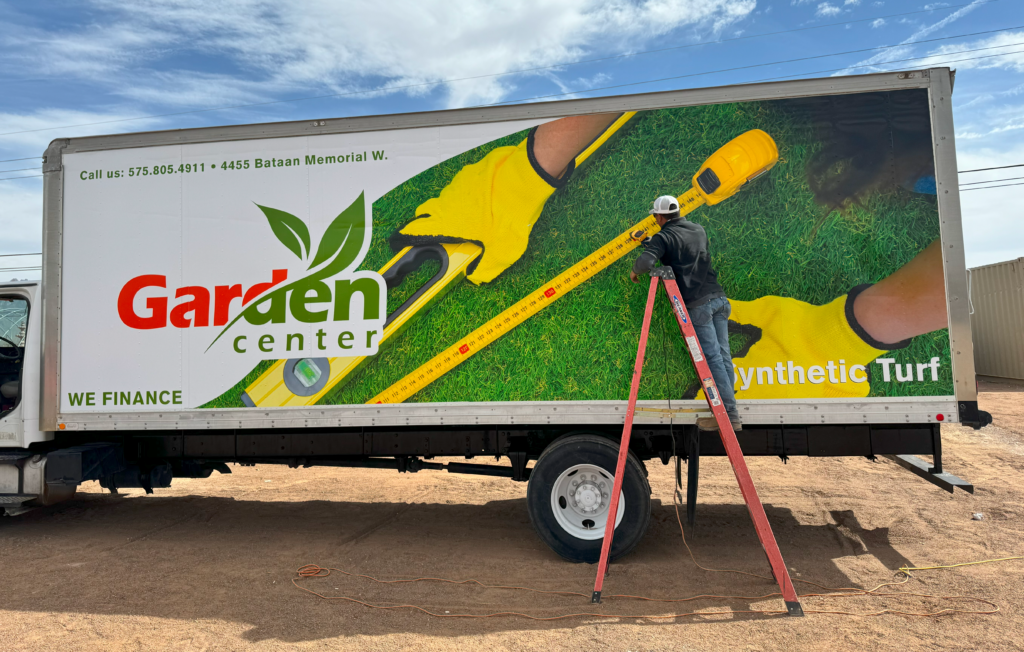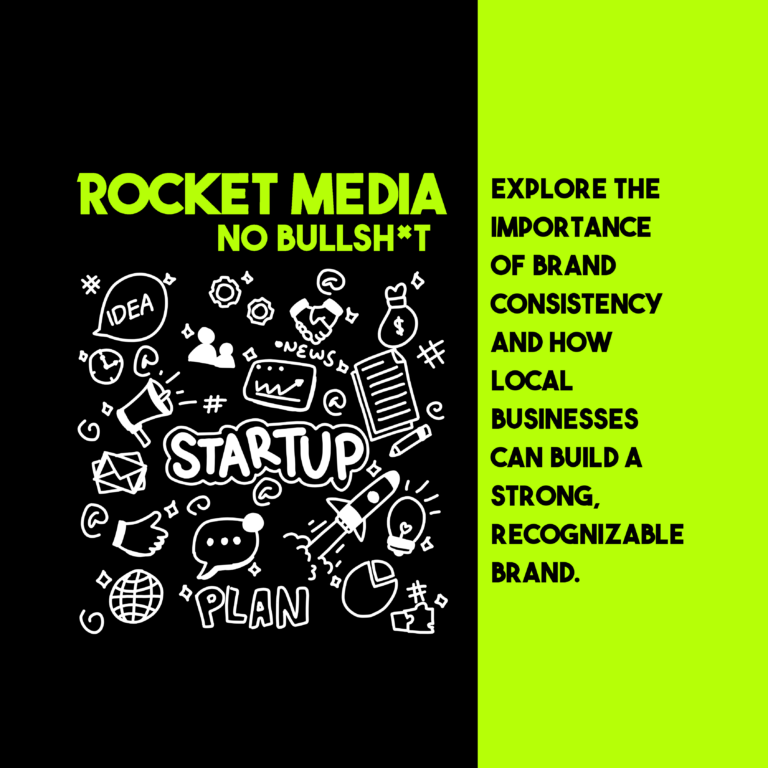Welcome to the dynamic world of marketing, a realm where creativity intersects with strategic thinking to carve out memorable brand experiences. In this era of endless digital streams, one might wonder about the relevance of tangible marketing assets. Yet, evidence points towards an unyielding truth: effective and high-quality marketing materials, such as banners, truck stickers, wrapped vehicles, advertising prints like brochures, flyers, and stickers, continue to wield tremendous power in branding and marketing strategies. These tools are not relics of a bygone era but essential elements that ensure brand visibility and recognition in a cluttered marketplace. This article delves into why these large format print media are not just surviving but thriving in the digital age and how they contribute to a cohesive and recognizable brand image.
The Importance of Visibility The Role of Large Format Print Media
In marketing, visibility is not merely about being seen; it’s about being noticed and remembered. Large format print media serve this exact purpose by breaking through the background noise of everyday life. Imagine driving down a highway and spotting a colossal, vibrant banner for a new restaurant or seeing a box truck emblazoned with eye-catching graphics promoting a local event. These are not mere visual encounters; they are engagements that lodge the brand into the viewer’s memory. Large format media command attention due to their size and scope, offering a visual feast that smaller formats cannot match. They turn passive observers into active viewers, making a mental note of the brand.
The Power of Brand Recognition Creating a Lasting Impression
Brand recognition is the silent ambassador of your business. It’s what makes your brand a familiar face among strangers. High-quality, well-designed marketing materials play a critical role in this process by leaving a lasting impression on the audience. When a brand consistently uses distinctive colors, logos, and imagery across various materials, it becomes more easily identifiable. This familiarity breeds comfort, and comfort leads to trust, laying the groundwork for customer loyalty.
The Psychology Behind Brand Recognition
The human brain is wired to recognize patterns and repeated visuals. This psychological trait is a boon for marketers. When consumers repeatedly see a consistent visual theme, whether on banners, vehicle wraps, or flyers, they begin to associate those visuals with the brand. This association builds a mental link between the imagery and the brand, making future recognitions of the brand more likely and faster. This is why consistency in marketing materials is not just recommended but essential for building brand equity.
Brand Cohesion and Consistency Ensuring Uniformity Across All Platforms
A brand is more than a logo or a slogan; it’s a comprehensive experience. Brand cohesion ensures that this experience is uniform across all platforms, from print media to online presence. This uniformity is crucial as it reinforces the brand’s identity and values, providing the customer with a seamless brand experience. When all elements of a brand’s marketing strategy speak the same visual language, it strengthens the brand’s voice, making it more authoritative and recognizable.
The Impact of Cohesive Branding
Cohesive branding is the glue that binds all the facets of a brand together. It’s what makes a brand identifiable across different mediums and contexts. When a consumer sees the same colors, types of imagery, and messaging on a flyer as they do on a vehicle wrap, it reinforces the brand’s presence in their mind. This repeated reinforcement makes the brand easier to recall in decision-making moments, giving it a competitive edge.
The Effectiveness of Banners Attracting Attention in Public Spaces
Banners are the titans of visibility in the marketing world. Their large size allows for creative and impactful designs that can convey messages effectively even from a distance. When strategically placed in high-traffic areas, banners act as silent salesmen, broadcasting your message to a wide audience without interruption. They are particularly effective for announcing new products, special events, or promotions, providing the maximum exposure at a relatively low cost.
Utilizing Design and Color
The design and color of banners are pivotal; they can make or break the viewer’s engagement. The right color scheme can evoke emotions and reactions that align with the brand’s message, while a compelling design can guide the viewer’s attention to the most important information. The use of vibrant colors, bold fonts, and concise messaging ensures that the banner is not only noticed but also read and remembered.
The Role of Vehicle Wraps Mobile Advertising: Trucks and Cars
Vehicle wraps transform ordinary vehicles into moving billboards. This form of advertising is incredibly effective as it allows the brand to reach different demographics and locations without the recurring costs associated with traditional advertising. The mobility factor means that a wrapped vehicle can advertise in a residential neighborhood one day and a bustling downtown area the next, providing wide-reaching exposure.
Benefits of 24/7 Exposure
One of the most significant benefits of vehicle wraps is their constant presence. Unlike TV or online ads that can be skipped or turned off, vehicle wraps are continuously on display, offering round-the-clock exposure. This constant visibility ensures that the brand remains in the public eye, increasing brand awareness and familiarity.
Print Media in Marketing Brochures and Flyers
In the digital age, brochures and flyers provide a tangible touchpoint for customers. They allow businesses to present detailed information in an accessible and portable format. Well-designed brochures and flyers can complement online marketing efforts by providing physical reminders of the brand that customers can take home, serving as a lasting brand touchpoint.
Stickers and Custom Prints
Stickers and custom prints offer a unique way to extend brand visibility. They can be affixed to almost any surface, turning everyday objects into brand ambassadors. This form of marketing is both versatile and viral; a well-designed sticker on a laptop or a water bottle can travel far, providing unexpected brand exposures in diverse settings.
Large Format Print Media Advantages Over Digital Media
While digital media have become indispensable in modern marketing, large format print media offer unique advantages that digital channels cannot replicate. The physical presence of a large banner, the tactile quality of a brochure, or the unexpected sighting of a wrapped vehicle provide sensory experiences that digital media cannot provide. These real-world interactions create lasting impressions that enhance brand recall.
Design Considerations Understanding Your Audience
The design of marketing materials should be led by a deep understanding of the target audience. Knowing the audience’s preferences, pain points, and behaviors allows marketers to craft materials that resonate on a personal level, increasing the likelihood of engagement and response.
Message Clarity and Visual Appeal
In the quest for eye-catching designs, clarity should never be compromised. Marketing materials should balance aesthetic appeal with clear, understandable messaging. The goal is to captivate the viewer while also providing them with the necessary information to make an informed decision about the brand.
Conclusion
In a world bombarded with digital messages, effective and high-quality marketing materials like banners, truck stickers, and wrapped vehicles stand out for their ability to promote brand visibility, recognition, and cohesion. These large format print media offer tangible benefits that digital formats cannot match, providing businesses with powerful tools to leave a lasting impression on their audience. Investing in these materials is not just about making a statement; it’s about building a memorable and cohesive brand identity that resonates with customers and stands the test of time.
FAQs
- Why are large format print media considered more effective than small-format materials? Large format print media are more effective due to their size and visibility, which allow them to capture the attention of a larger audience. Their impact is immediate and lasting, as they provide significant space for creative and persuasive designs that engage viewers.
- How often should I update my marketing materials to keep my brand fresh? It’s advisable to review and potentially update your marketing materials at least annually or whenever there’s a significant change in your products, services, or brand strategy. Regular updates ensure that your materials remain relevant and aligned with your current branding.
- What are the key elements of a successful vehicle wrap design? A successful vehicle wrap design should include clear and concise messaging, vibrant colors, and large, readable text. It should also feature the brand’s logo and contact information prominently, ensuring that the vehicle serves as an effective mobile advertisement.
- Can print media coexist effectively with digital marketing strategies? Absolutely, print media can complement digital marketing strategies by providing a physical component to the virtual experience. Integrating QR codes or social media details on print materials can create a seamless connection between the two mediums.
- How do I measure the success of my print marketing materials? Success can be measured through various metrics such as increased brand recognition, higher foot traffic, more inquiries, or direct sales attributed to the campaign. Surveys and customer feedback can also provide insight into the effectiveness of print marketing materials.


